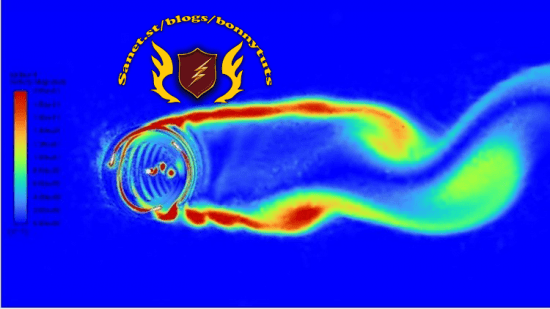
Published 07/2022
MP4 | Video: h264, 1280×720 | Audio: AAC, 44.1 KHz, 2 Ch
Genre: eLearning | Language: English | Duration: 14 lectures (2h 22m) | Size: 1.34 GB
Solve 2D VAWT turbine using URANS method in Fluent
What you’ll learn
How to extract data from research paper for validation of any CFD project e.g. wind turbine
Should be able to create import airfoil coordinates of airfoil (NACA 0015 for tis course) and create geometry of wind turbine
Should be able to create domain along with body of influences for local mesh refinement
Create highly quality mesh for turbulence model along with study of Y+
Setting up wind turbine problem including providing rpm, inlet conditions, time step in Fluent
Solve unsteady wind turbine CFD simulation with proper emphasis on ascertaining the proper convergence of results such as torque
Analyze data in excel and get averaged quantities such as time averaged torque values and power from unsteady data
Compute Cp (coefficient of turbine) from CFD compare it with experimental data for validation of CFD approach used in course
Understand the unsteady CFD problem solution for wind turbines
Requirements
ANSYS 2022 R1 installed on your computer
Computer with i7/i5 processor with at least 8 GB RAM
Basic understanding of wind turbine, CFD, ANSYS
Description
This course is designed to teach you Wind Turbine Unsteady CFD Simulation in most straight forward way!
In this course, you will learn to conduct URANS CFD analysis of Darrieus Vertical Axis Wind Turbine (VAWT). First you will get coordinates of NACA 0015 airfoil from website, which is base airfoil for this turbine. Then you will import it into design modeler and proceed with creating geometry of three blades along with domains for rotating and fixed regions. After that you will create high quality mesh in ANSYS meshing with emphasis on resolving near wall flow using find mesh in blade region with Y+ < 1. You will create refined mesh in wake region using body of influence option. After that you will setup problem in Fluent with appropriate boundary conditions, material properties, time step cell zone conditions, interfaces, solver settings etc. We will setup report definitions to monitor torque and based on that we will monitor convergence. You will initialize solution using hybrid method and solve the problem.
Once solution is converged, you will take data from stored torque vs time step and import into excel and average it to find out time average torque. From this torque you will find out the power and ultimately coefficient of power Cp.
Finally we will compare Cp from our FD with experimental data given in high quality research paper.
In short after this course, you will be able to conduct CFD simulation of VAWT and get the time averaged values such as torque and Cp to compare to experimental data! In this course it is shown that the error is only 1% in CFD results presented in course as compared to experimental data in given research paper.
Who this course is for
This course is intended for students and professionals who want to learn CFD analysis of wind turbines specially vertical axis wind turbine (VAWT)
Any professional or studnet who want to learn CFD as hobby, so this problem can give you very deep insight of CFD application to practical problem solution
Password/解压密码www.tbtos.com
https://rg.to/file/30cd0596987cc2311dbe5e09b72dd47b/CFD_analysis_of_2D_H-Type_Darrieus_Turbine_(VAWT).part1.rar.html
https://rg.to/file/8cd217905a39243fdeda8c84c667cd7f/CFD_analysis_of_2D_H-Type_Darrieus_Turbine_(VAWT).part2.rar.html
https://rg.to/file/b3fe544f74f0d8fb6695ff886c611b46/CFD_analysis_of_2D_H-Type_Darrieus_Turbine_(VAWT).part3.rar.html
转载请注明:0daytown » CFD analysis of 2D H-Type Darrieus Turbine (VAWT)